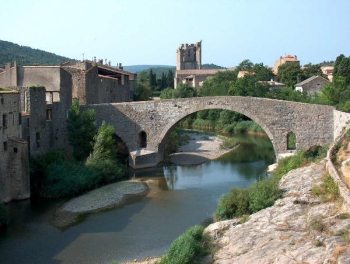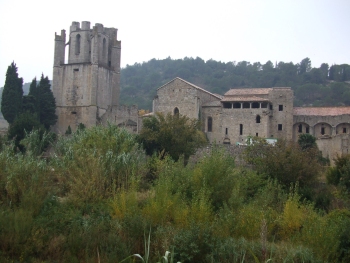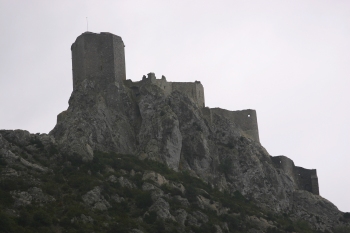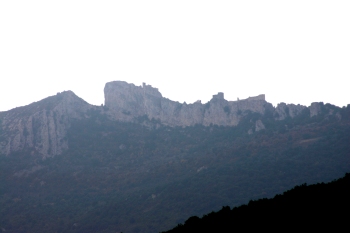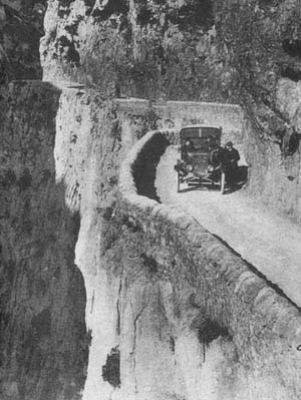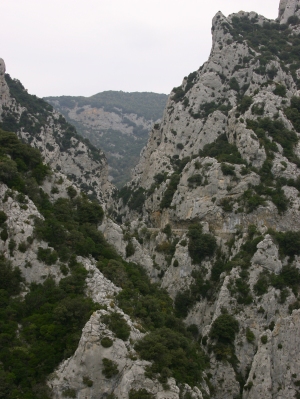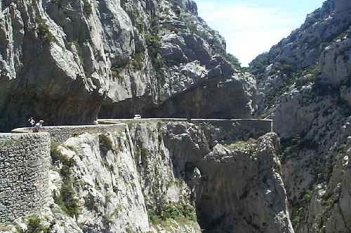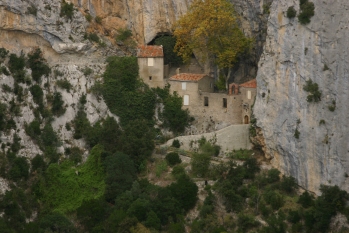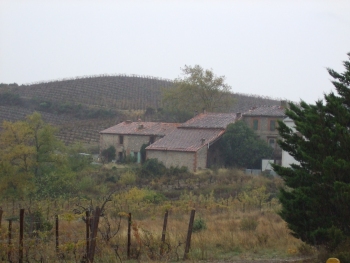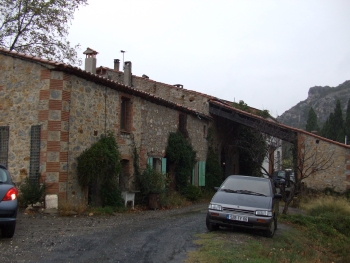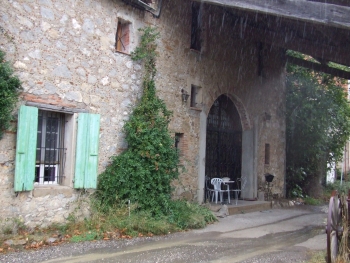The Befouled Weakly News
11 November 2007
- A Foray to France (Part Three)
Good morning one and all. Before we begin this weak’s edition, we must publish a letter from one of our many disgruntled readers:
Well, I suppose that’s what we get for relying on western historical sources. With sincere apologies to all our Chinese readers I am more than happy to set the record straight. And so on to the concluding portion of our Foray to France. On Thursday, following the usual routine of a breakfast of freshly baked croissants, we said good-bye to Joe and Amandine and set off on the road to Perpignan and the airport by way of some dramatic and inspiring ruins and scenery. While Joe and Amandine kept insisting that our visit had been a most welcome diversion from the tedium of their daily routines, we couldn’t help but notice the spring in their step and the jig of a dance they performed in the market square as we drove away. The day was overcast and spitting with rain as we retraced our route of Wednesday down the motorway and across toward Carcassonne. However, before reaching Carcassonne, we turned off on a smallish road toward the village of Lagrasse and the Abbaye Lagrasse. Lagrasse is described as, “the most beautiful village in France.” Hmmm, haven’t we heard that somewhere before.... Indeed, however, it is a very beautiful village and undoubtedly would have been even more picturesque had the sun been shining. Also, being October the Abbaye wasn’t open to visitors until the afternoon and, as we had a plane to catch, all we could do was cross the 12th century hump back bridge, wander around the edge of the Abbaye, down across the river again, through the narrow streets of the village, grab a coffee/hot chocolate in the café and then back on the road again.
We left Lagrasse and headed on some fairly small and interesting winding roads towards the Chateaux de Quéribus and Peyrepertuse. The Château de Quéribus is one of the so-called "Five Sons of Carcassonne", along with Aguilar, Peyrepertuse, Termes and Puilaurens: five castles strategically placed to defend the new (1659) French border against the Spanish. It’s location alone is simply stunning – at the top of a steep ridge, high and isolated – and once again one marvels at the determination of those who built it. In the 11th century it had been a castle guarding the frontier and, in later times, it became one of the Cathar’s last refuge. After the fall of Montségur in 1244 surviving Cathars gathered together here. In 1255 a French army was dispatched to deal with these remaining Cathars, but they slipped away without a fight.
If Quéribus is stunning, Peyrepertuse simply defies description. Located again at the top of a steep, high and isolated ridge, it is huge. And then you remember that all the building materials had to be hauled up to the top of this mountain. It is the largest of the Cathar castles stretching to 2 hectares with a 2.5 km wall and reminds you more of a city than a castle. During the 12th century it belonged to the King of Aragon; however, when in 1240 various leaders of the Cathars escaped to it, it had to share the fate of all of the Cathars' castles. From Peyrepertuse we made our way through the unbelievably narrow Gorges de Galamus, carved by the River Agly. This, once again, defies description – how on earth did engineers build a road along the steep cliffs of this gorge (and, perhaps equally perplexing – why?) The gorge is only 3 km but it seems much longer as you inch your way along the narrow road, expecting to encounter oncoming traffic at every turn. The road was built in 1892 and twists dramatically along a shelf carved out of the rock which occasionally overhangs it as the gorge becomes narrower and narrower at the northern end. When we visited this area with Dad and Mom in 1990 I remember driving through the gorge; now I cannot imagine how we did it – the road is wide enough for only one car in various spots yet traffic travels both ways down (and up) the gorge. It would be a real drag to meet a large camper or something; as it was we had to back up about 100 metres when we met the one car coming in the opposite direction; in the summer it must be a nightmare. The hermitage of St. Antoine-de-Galamus is located at the southern end of the gorge and is built into the side of the gorge where there were some natural caves. Indeed, the area has been inhabited since pre-historic times and undoubtedly seemed like a good spot to get away from it all. It is reckoned that the site was occupied by early hermits seeking some sort of spiritual inspiration as long ago as the 7th century but the current Hermitage was built by St Paul de Fenouillet in the 1780s.
We eventually emerged from the Gorges de Galamus onto a fairly main and substantial road which ultimately would lead to Perpignan and the airport. However, we had one other diversion to take seeking a rendezvous in or near the village of Tautavel – we had to make an effort to track down the Butler’s Mas where they lived for a number of years in the late 1980s and early 1990s. So, we found ourselves in Tautavel where we grabbed a bite of lunch and then spent the next hour or so scouring the countryside looking for the Mas. A phone call to Beryl back in England to solicit some instructions proved somewhat fruitless – she always has had difficulty distinguishing her left from her right and the place had changed so much in the intervening years that her instructions unfortunately made no sense at all. After three trips out into the countryside going up (and back down again) a number of lanes and tracks we found ourselves back in Tautavel ready to abandon our expedition. One final interview with a passerby got us on the right road however and, as we rounded a bend, there it was in front of us. Even on a drizzly overcast day we were reminded of what a great spot this was, in the middle of nowhere with vineyards as far as the eye could see in all directions. In the time since the Butler’s sold it, what was the derelict cottage to the left has been renovated and we could see through the front doors that the enormous main room (where the wine would have originally been stored) was still one wide open space as it had been in their day.
And so, on to the airport and back to England after a wonderful and fun-filled six days. Our thanks to Joe and Amandine for putting up with us and for directing our visit with such effortless skill and charm. They foolishly suggested we should come again; pity for them, but we shall. And finally, this from the BBC web site earlier this week:
After all that, you don’t need any jokes this week! Love to you all, Greg Back to Greg's Temporary Home Page
|
||||||||||||||||||
